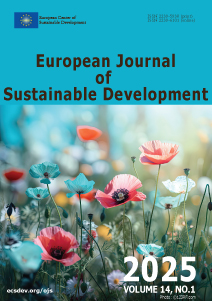Reviewing Transition Economies (1989-2021): Sustainable Reform Outcomes in Post-Socialist Countries
DOI:
https://doi.org/10.14207/ejsd.2025.v14n1p198Keywords:
cluster analysis, transition economies, social entrepreneurship development, public administrationAbstract
The article is devoted to the assessment of the results of reforms in transition economies for 1989-2021 using cluster analysis. The article allocates 27 indicators characterizing the main parameters of the transformations of 25 post-socialist countries of CEE, SEE, Baltic, South East Asia, former CIS countries, etc. Using the methods of elbow, silhouette and gap analysis, the optimal number of clusters for transition countries is determined. The Ward method was used to cluster the transition countries into two groups and to draw a diagram with the boundaries of the clusters. The first group includes countries that are less successful in reforming, and the second group includes countries that have achieved significant results in reforming. Based on the analysis, conclusions and recommendations are drawn towards social entrepreneurship development as a driving force of social innovative dissemination.
Keywords: results of post-socialist transformation in 1989-2021, cluster analysis, transition economies, social entrepreneurship development, public administration
Downloads
Published
How to Cite
Issue
Section
License

This work is licensed under a Creative Commons Attribution-NonCommercial 4.0 International License.





